Mullin Museum, Home to Dozens of French Cars, Will Close
After 13 years of operation, the Mullin Museum in Oxnard, California, will be closing permanently in February. This news comes just a few months after the passing of Peter Mullin, the founder of the museum.
The private museum, which opened to the public in 2010, houses a stunning collection of sleek coachbuilt coupes, graceful racing roadsters, and powerful touring cars, with a focus on French automakers including Talbot-Lago, Delahaye, and Bugatti. Many of the museum’s cars came from Peter’s fabulous personal collection, while cars on loan from various collectors helped supplement several stunning exhibits at the museum that highlighted the craftsmanship of cars from the brass era through the early post-war period, with a focus on curvy, Art Deco masterpieces from those aforementioned French brands.
So far, we know that four cars from the collection will remain on display after the museum closes. They will make a short trip south to Los Angeles to become part of the Petersen Automotive Museum. It’s a logical move, since Mullin was a founding board member of the Petersen Automotive Museum and a major influence in the Petersen’s overhaul eight years ago that completely transformed the look, inside and out. The four cars that will soon be found at the Petersen are a 1937 Talbot-Lago T150 CS “Teardrop,” a 1938 Hispano Suiza H6B Dubonnet Xenia, a 1939 Delahaye 165, and a 1938 Delahaye 145.
“Sharing these ‘rolling sculptures’ and beautiful art with others was Peter’s truest passion, and the museum helped bring that vision to life,” said Merle Mullin, director of the Mullin Automotive Museum. “We are deeply indebted to our staff, docents, volunteers, visitors, and supporters who have dedicated their time and passion over the past 13 years. I hope past and first-time visitors will have a chance to say goodbye before we close.”
We spoke to Ken Gross, who was a friend of Mullin and also a former Executive Director of the Petersen Automotive Museum, who told us that Robert Petersen had hoped that his automotive museum could permanently house a part of Mullin’s collection. While that vision hasn’t come to fruition, many of Mullin’s cars have been parts of various exhibits at the Petersen over the years. Gross described the Mullin Automotive Museum as a “miniature Paris Salon, in the best of ways,” noting that “there isn’t another museum like it in the country.”
If you’d like to see the Mullin’s collection again, or for the first time, the museum will be open for three more days, through Saturday, February 10, before closing for good. You can find tickets here.
***
Check out the Hagerty Media homepage so you don’t miss a single story, or better yet, bookmark it. To get our best stories delivered right to your inbox, subscribe to our newsletters.


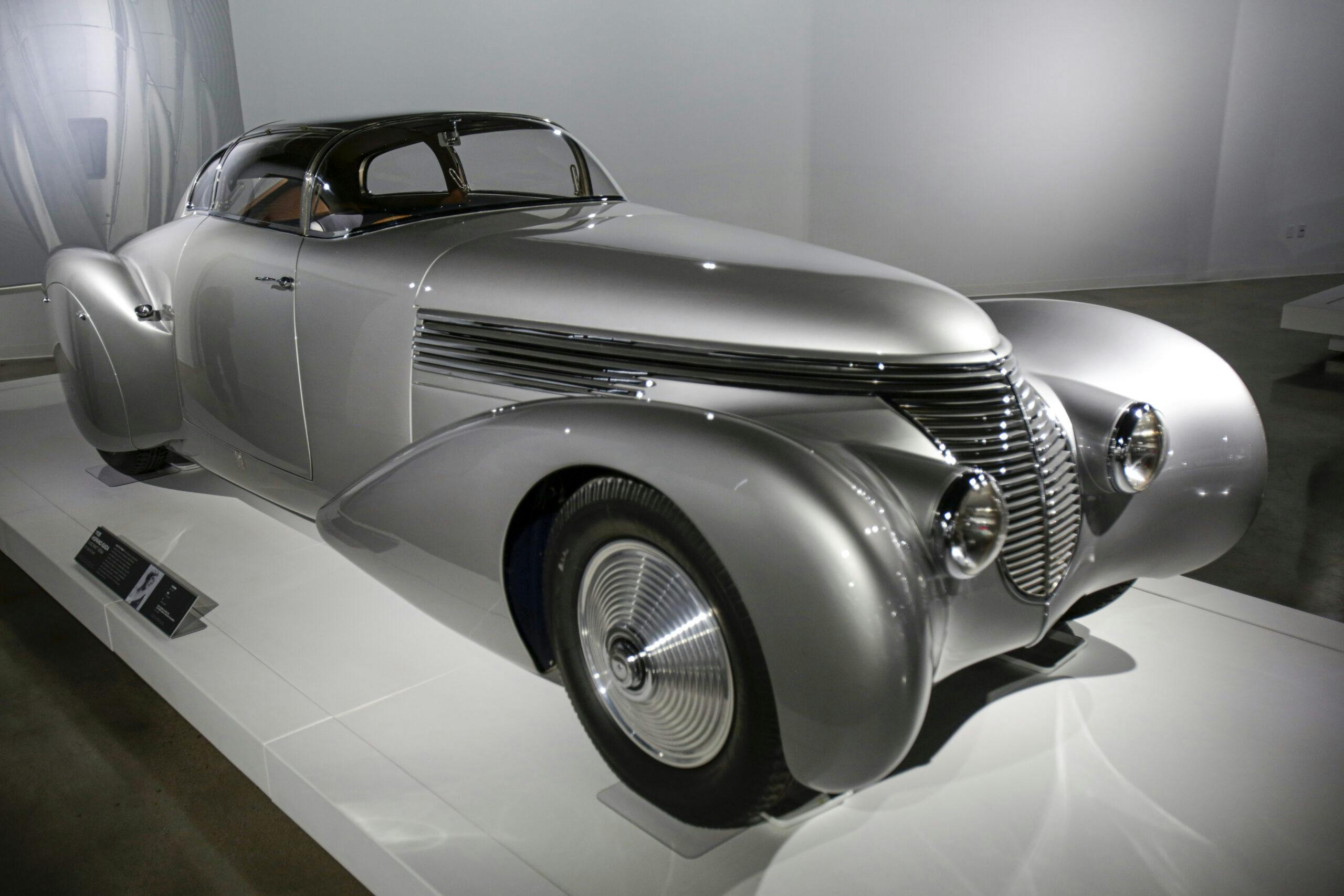
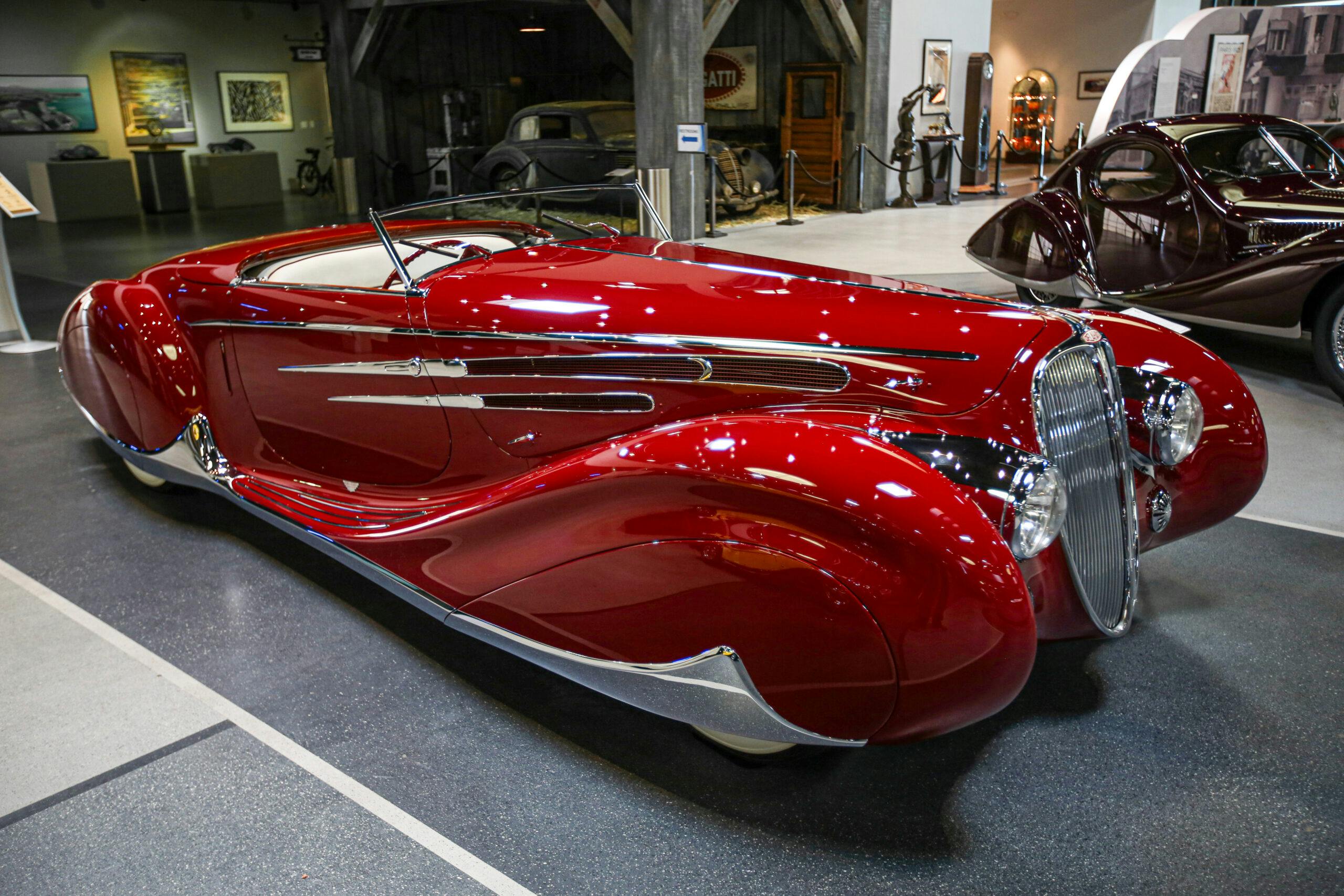
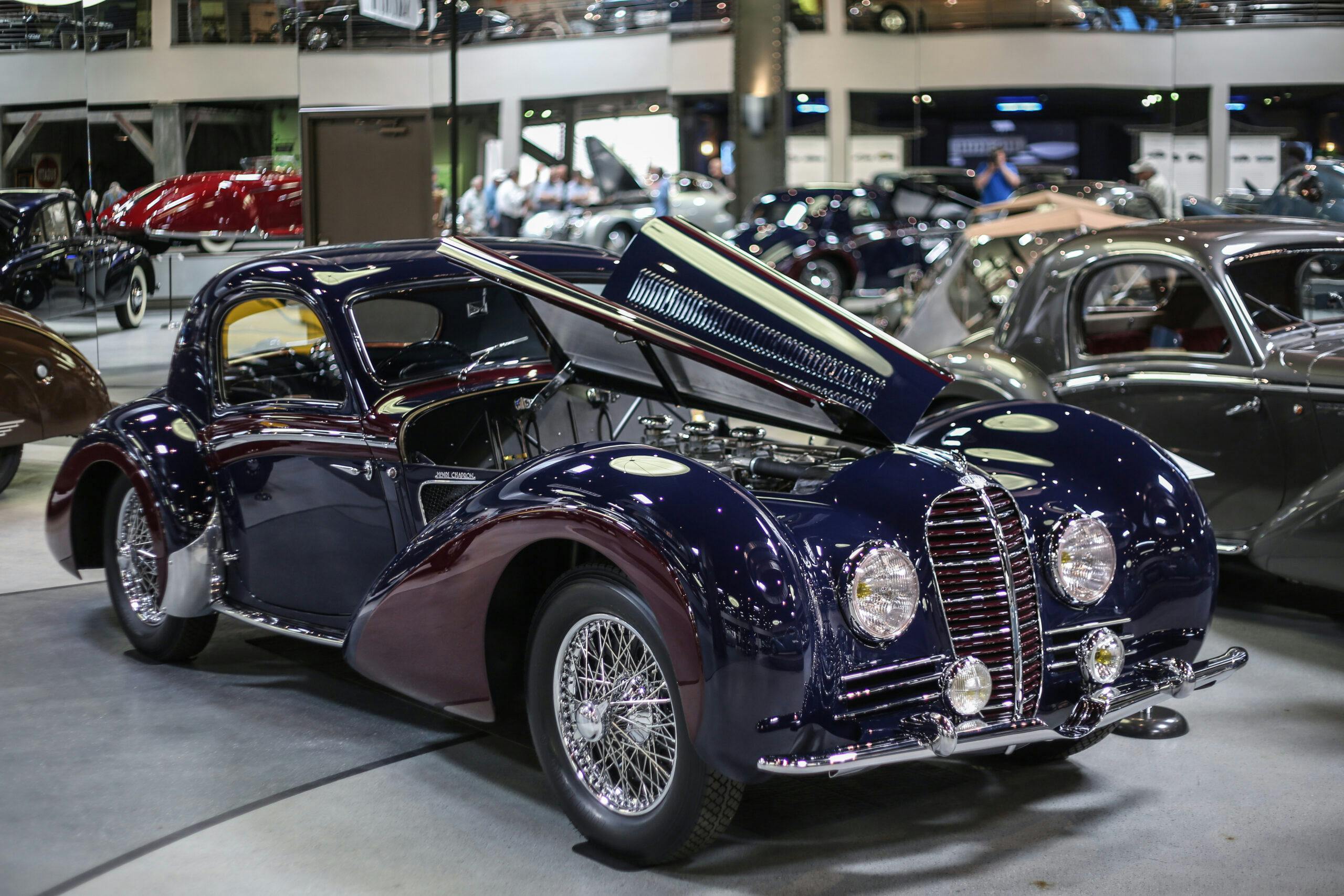
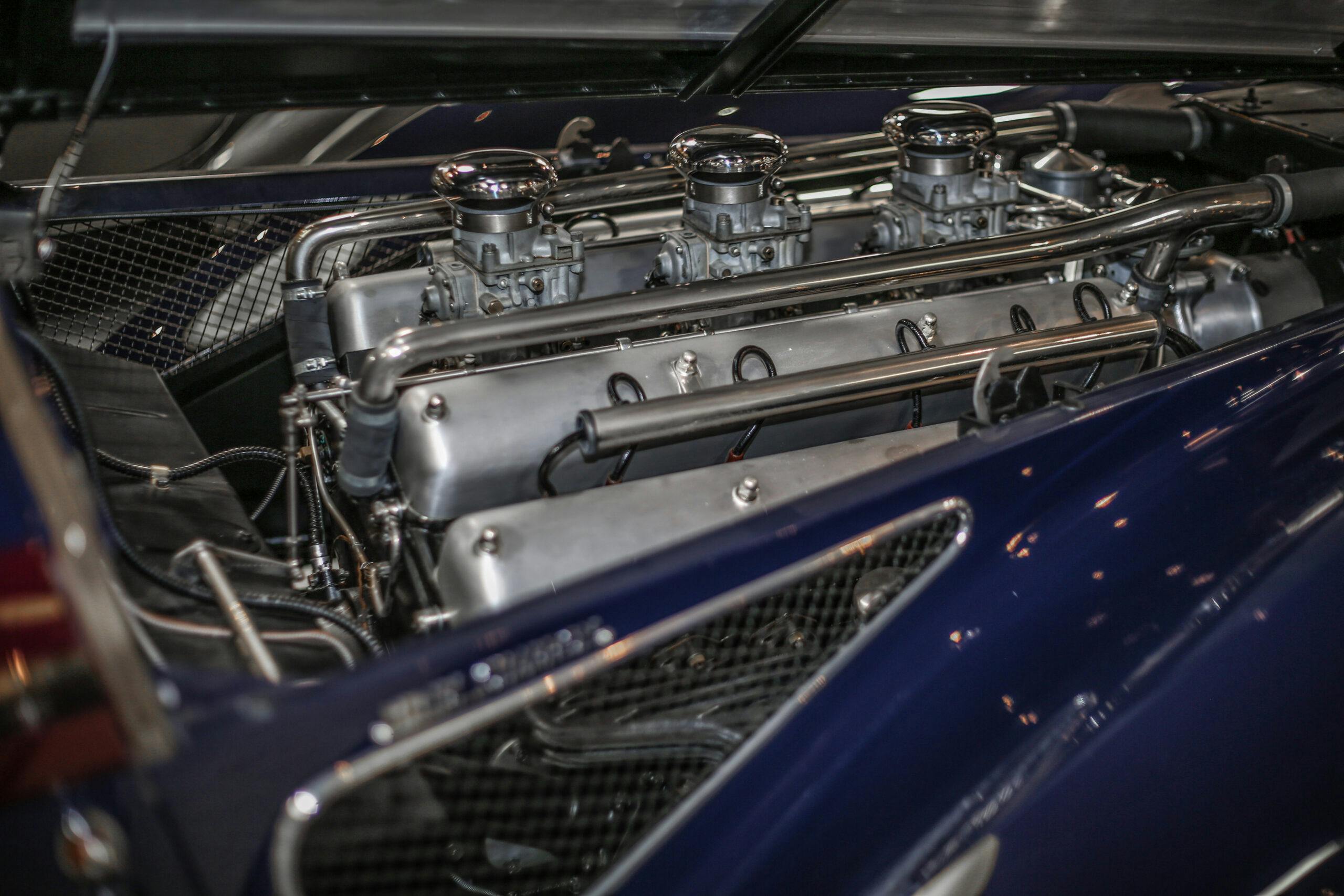
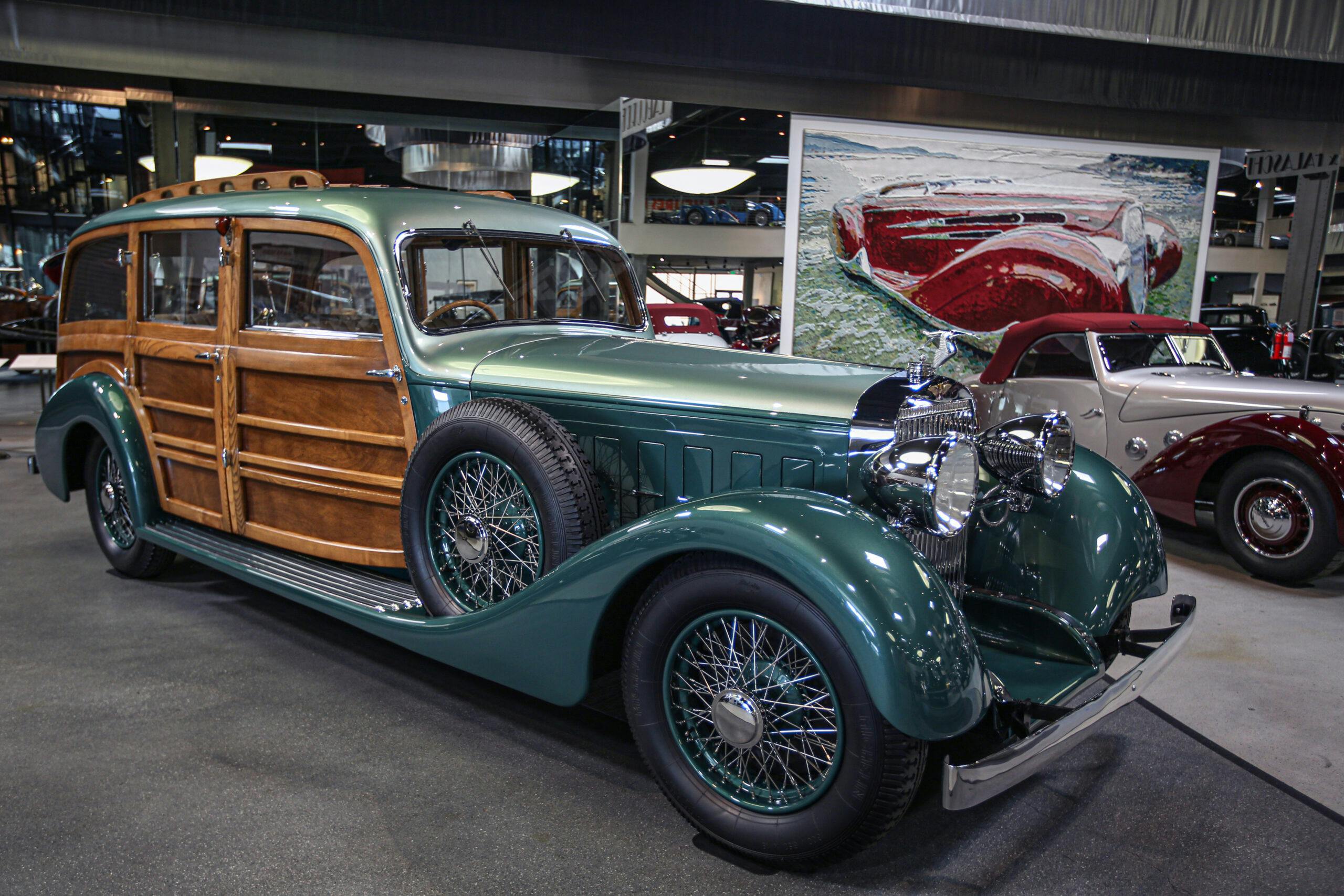




Sad that too often these car collections that a museum get dispensed when the owner passes.
It is sad to hear of the passing of Peter Mullin and closing of this world class museum. In the spring of 2016 on a road trip through southern California I was fortunate enough to make reservations for a tour of the museum. When I arrived I and a French family of five who had flown in from France were the only ones to attend on that day. A thoroughly knowledgeable docent took us step by step, car by car on a tour of the museum. What a treat it was! Before leaving I bought a couple books and a couple model cars to bring home
with me to remember this experience by. Something I will always remember.
RIP Peter Mullin…your contribution to our automotive world will be forever cherished! I’m fortunate to live in Louisville, Kentucky, home of the Jim Patterson collection. Although private, it’s possible to get an invitation and see his collection of fabulous French cars and Pebble Beach winners.
At least the cars will still be around to see at Petersen.
Well four of them, yes.
What made the Mullin Museum special was that it not only displayed cars, but also told the story of the Bugatti family and the influence of Art Deco on French, custom-bodied cars. The museum also displayed early – mid 20th Century furniture and artwork, much of it executed by Bugatti family members. The Mullin Museum was really extraordinary; kind of a car museum for serious car enthusiasts. The Petersen has many good exhibits, but it is targeted at a broader audience, including children and tourists who aren’t car people (the sort who consider a Batmobile to be a cool, a vintage car).
The Mullin Museum – and Peter Mullin – will be missed.
Jay, you well sum the loss, and grasp the museum’s intent, lost on most Joe Sixpack “car guys.”
I had the chance to view the Mullin collection in Oxnard a couple of years ago. Spectacular!! Hopefully these examples of rolling artwork will be available to the public instead of sent off to private collectors.
I wonder what will become of the Bugatti in the Lake exhibit. I hope it doesn’t fall into the hands of someone who is intent on restoring it. It’s too valuable as a historic artifact.
I didn’t get to the Mullin museum but saw several of his cars over the years at the “old” Meadowbrook Hall Concours d’Elegance. Fabulous studies in design and architecture. Thanks to Peter for sharing his collection and educating us on another chapter of the automobile at its finest. I would like to think someone will takeover the collection and re-open it either as it is or in a similar style in another city.
Sad news, but not surprising. Other than looking at shiny pictures online, or visiting such a museum, there are ever fewer with the education, knowledge to appreciate the charm and engineering of ’30s and ’40s automobiles. Witness the proliferation of “retro rods,” Frankencars. We’ve even seen senior ’30s Packard Eights and Twelves with crate Chevy V-8s, TurboHydraMatics, big chrome wheels.
Once, culture often accompanied money. Not so today. Other than a few tournaments of credit lines like Pebble Beach and Amelia Island. We’re talking about the loss of those with the ability to work on, maintain, own unbuggered, unbutchered cars of yore. And don’t tell us you can’t afford such and in the next breath bore us with how much money you’ve dumped into some “numbers matching” piece of egregious ’60s Motown tin or decaled automatic transmission, power braked, power steering “muscle car” one-trick pony.
You can buy many Delahayes, Delages, prewar Packards, Pierce-Arrows, Auburns, et al for a relative song.
No. It’s knowledge, real knowledge, appreciation of the cars and their times. The adults have left the room.
Unfortunately, well said.
“You can buy many Delahayes, Delages, prewar Packards, Pierce-Arrows, Auburns, et al for a relative song.”
Relative is, well, relative. They might be “cheap” compared to the prices they once brought, but it’s not like any of us can go out and grab a running/driving project Delage for $10k. Even when cheap those are expensive cars.
And in most cases the adults left the room in a bodybag and without sharing or documenting their knowledge. I’ve personally been in the room with multiple Stutz Bearcats and the experts who can tell a real one from a fake one and guess what? Not a single person would share that knowledge even when kindly asked. I’m not a “young person” anymore, but it’s incredibly frustrating to hear people decry “the knowledge is going away” when those who try and seek it out and want to join in the community are told straight to their face that information won’t be shared. No amount of young people wanting to enter the hobby will be enough if the “adults in the room” are not inviting and welcoming.
Monsignor Ol’ Jar, i’ve been immersed in prewar cars since 1974 (and via print since fifth grade) and some of the nicest, most welcoming and interesting fellows encountered on both coasts were owners, mechanics of such fine old cars. And yes, you can get a stellar, well-sorted Delahaye, Delage, Stutz SV16 or even DV32, Auburn 8 or 12, Packard, Pierce-Arrow, Buick, Hudson, Railton among myriad other gems for l e s s than many of the usual “muscle” cars–station wagon engines in mid-sized platforms with teenage suspensions. After making a fool of yourself jerking off at stoplights, what’s the encore? Slam bam thank you, ma’am ’60s tin with decals. BTW, many of us have been there, but grew up, wanted more.
So, you encountered some rich old snobs. What else is new? They lacking personalities more a province of inherited wealth abetted by leveraged real estate. They’d exhibit such insularity whether involved in sport cars, GT cars, paintings, antique furniture, anything. Similarly, not all muscle car devotees are unread Joe Sixpacks, if suffering limited knowledge of the range of 120 years of autodom.
We are hardly damning those with diverse interests. Only decrying limited scope.
If you really want a fine car from the ’30s or ’40s from either side of the Atlantic or Channel, there are loads of them available for a bargain. There are many involved with them who were born well after they were built.
AaaAAAaaaAAAnd…. there are these things called shop manuals, clearly written, illustrated, detailed descriptions of every component and its servicing, rebuilding, using basic tools. No computers required. Just patience and the ability to read.
Most of such cars are overbuilt, and modern grease and oil, DOT 5 silicone brake fluid, reverse osmosis water and better rust/corrosion inhibitors, Optima 800 cold cranking amp Red Top 6-volt batteries, even radial tires on those with wheel sizes to accept them all ensure reliable driving.
Randy, be assured there are clubs for any marque you can name, brimming with enthusiastic gents who love to share information, encouragement.
… “there are these things called shop manuals, clearly written, illustrated, detailed descriptions of every component and its servicing, rebuilding, using basic tools. No computers required. Just patience and the ability to read.” – I wish it were that easy, but I try. Sometimes it takes me days to do what an experienced mechanic (with experience doing that particular repair a certain way, in a certain order) can do in less than an hour. Plus, I’m talking about an American car from the 40’s, where the shop manual is written in English. 🙂
That’s true of any car from any decade, JG. All cars have trying procedures. In general, domestic cars of the ’40s are less complicated than newer cars, easier access. Cars of the ’30s are generally simpler yet. Anyone who’s worked on cars from the ’30s to those of today would tell you the same. It’s a question of familiarity. The non-problem is that you, like many of us, are not an experienced wrench. That’s not the fault of the car.
You’d proceed at the same pace if working on something much newer, if it was new to you.
Relax, go slow.
I’m glad I got to visit the museum a few years ago without running into some of the gasbags commenting here.
Ha ha! (= LOL)
Re: working on old cars/info/how to etc. Years ago I stopped in at a garage that worked mainly on British Cars, when I asked if there were any tips on how to remove the quarter eliptical rear springs on my MG midget, despite having shop manuals etc. which simply said “remove mounting bolts” Yeah right…the very helpful mechanic said…”perseverance” !
Update on the Mullin Museum collection. Yesterday, Gooding auctioned the bulk of the collection in an on-site sale. As most of you know, in addition to the four halo cars described above that were “sent” to the Petersen Museum for display, several cars from the collection had been sold during Gooding’s Amelia Island auction in early March. Notable pieces from that sale included the Bugatti Type 35C and Delage D6 Grand Prix cars that many had seen Peter race at numerous vintage events over the years as well as several each of Citroen, Delahaye, and Avions Voisin road cars from the collection.
Highlights from yesterday were a Bugatti Type 57C Aravis Cabriolet which hammered for $6 million, a Hispano-Suiza J12 Cabriolet for $2.1 million, and a Bugatti Type 46 Coupe for $1 million. Many cars in unrestored condition, including several that Mullin had acquired from the Schlumpf Collection in France several years ago, were in the sale as well. Descriptions for all Lots can be found on the Gooding & Company website. There were a few bidders who placed winning bids for multiple lots, so perhaps some of the collection will surface at some future point.
In a recent interview, Merle Mullin (Peter’s widow) said that none of their offspring are in a position to oversee a collection. Understandable, given the commitment and resources required to undertake such an endeavor.
It was also revealed that the Bugatti Type 57SC Atlantic Coupe is indeed co-owned by Rob Walton and has reverted to his care.
All that said, the fate of the Lake Maggiore Bugatti remains a mystery. Let’s hope it doesn’t disappear for another 70 years.